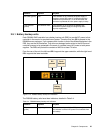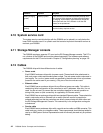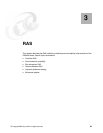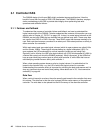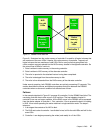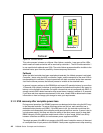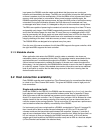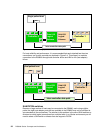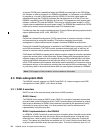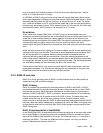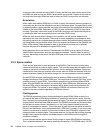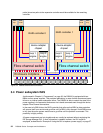Chapter 3. RAS 49
input power, the DS6800 controller cards would detect that they were now running on
batteries and immediately shut down. The BBUs are not sufficient to keep the disks spinning
so there is nowhere to put the modified data. All that the BBUs will do is preserve all data in
memory while input power is not available. When power becomes available again, the
DS6800 controllers begin the bootup process, but leave the NVS portion of controller memory
untouched. During the initialization process, the NVS data area is examined and if any
un-destaged write data is found, it is destaged to disk prior to the controllers coming online.
The BBUs are capable of preserving the contents of controller memory for at least 72 hours,
and possibly much longer. If the DS6800 unexpectedly powers off while processing host I/Os,
and is then left without power for more than 72 hours, then any un-destaged writes in NVS
may be permanently lost. Since we do not know which tracks were in NVS at the time of the
power failure, all data on the DS6000 would have to be considered as suspect, and data
integrity checking at the least—and data recovery at worst—may be necessary.
The DS6800 BBUs are designed to be replaced every four years.
From the rear of the server enclosure, the left-hand BBU supports the upper controller, while
the right hand BBU supports the lower controller.
3.1.3 Metadata checks
When application data enters the DS6000, special codes or metadata, also known as
redundancy checks, are appended to that data. This metadata remains associated with the
application data as it is transferred throughout the DS6800. The metadata is checked by
various internal components to validate the integrity of the data as it moves throughout the
disk system. It is also checked by the DS6800 before the data is sent to the host in response
to a read I/O request. Further, the metadata also contains information used as an additional
level of verification to confirm that the data being returned to the host is coming from the
desired location on the disk.
3.2 Host connection availability
Each DS6800 controller card contains four Fibre Channel ports, for connection either directly
to a host or to a Fibre Channel SAN switch. This gives the DS6800 a total of eight ports for
host connections.
Single and preferred path
Unlike the DS8000 or the ESS 800, the DS6800 uses the concept of preferred path, since the
host adapters are integrated into the controller hardware rather than in separate I/O bays.
What this means is that the attached host systems must be aware that it is preferential to
direct I/O to a particular controller. If an I/O request for a particular LUN is delivered to a host
adapter located in the non-owning controller, that controller will use an internal data bus to
route the request to the owning controller. This re-route of the I/O request has a performance
cost but does not affect the reliability or availability of the DS6800.
If a host were to only have a single path to a DS6800, as depicted in Figure 3-3 on page 50,
then it would still be able to access volumes belonging to all LSSs, but I/O for odd LSS
volumes would use the internal data path between the controllers. However, if controller 0
were to have a hardware failure, then all connectivity would be lost. Within the figure itself, an
HP is a host port (a fibre port located in the DS6800 controller card), a DA is two device
adapter ports (also located on the DS6800 controller card) and an HBA is a host bus adapter
(a Fibre Channel card located in the attached host).



